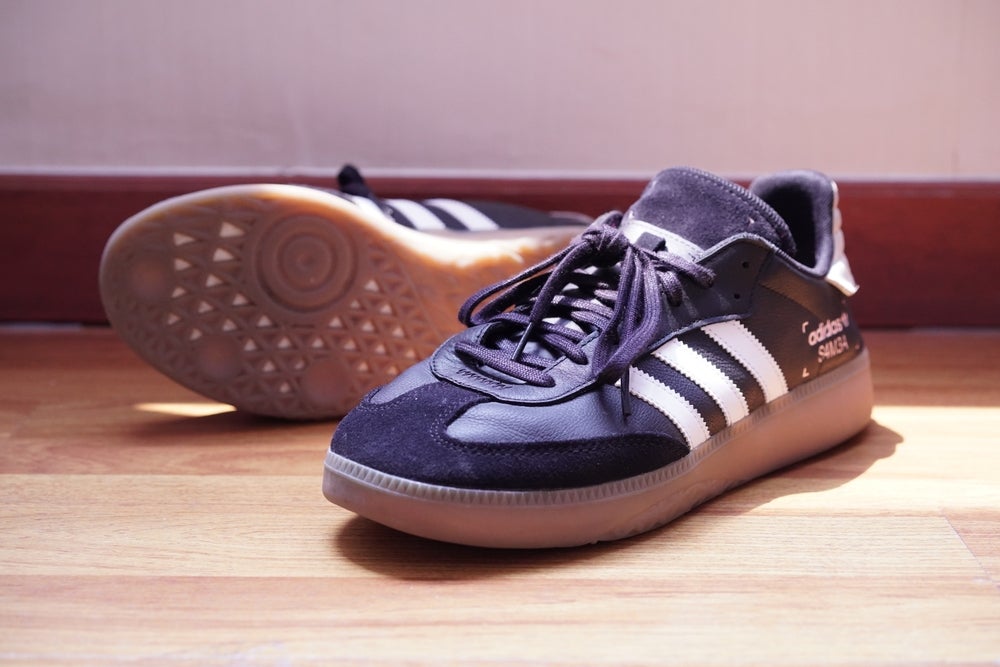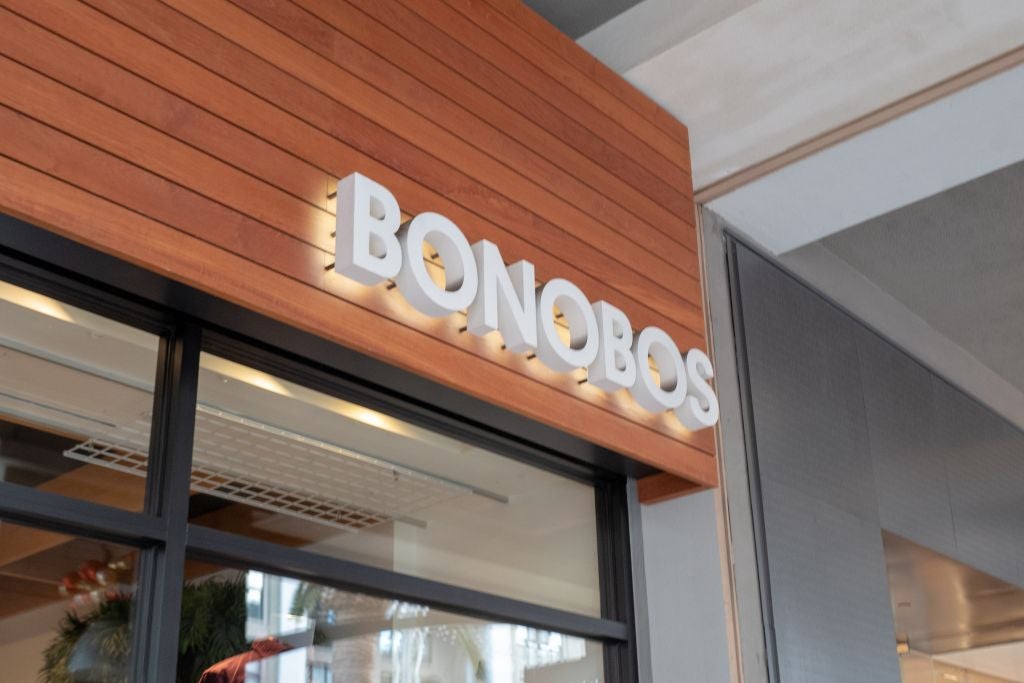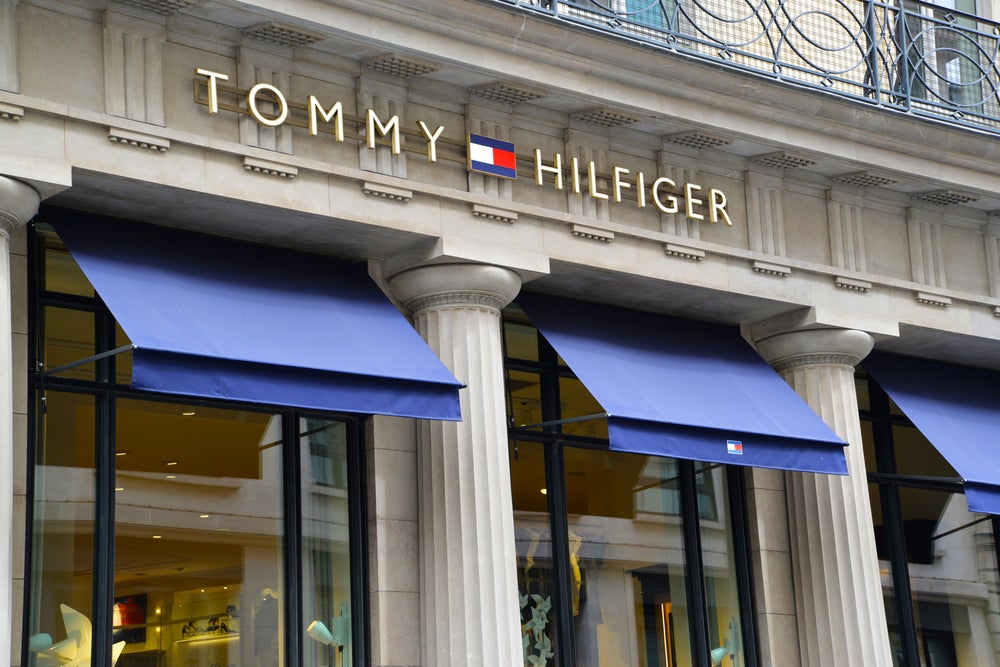
adidas says the 1% increase in currency-neutral revenues reflects its conservative sell-in approach, aimed at reducing previously high inventory levels, improving sell-through and focusing on full-price sales.
The company has also reduced inventory levels by 23% – more than it previously planned.
Adidas says its Terrace range, which includes the popular Samba, Gazelle and Spezial trainers, has been a particular hit. The company’s CEO says that despite scaling-up supply, Adidas is still not meeting demand for these trainers.
Adidas’ performance range, including its Adizero Adios Pro EVO 1 shoe, which was worn during record-breaking marathon races this year, which the brand says has “generated a lot of attention and strong demand” for the entire Adizero range. The range saw “strong double-digit” growth as a result.
However, overall sales in Q3 2023 were down 6.4% compared to the same period in 2022. Apparel sales fell 6% and accessories fell 3% compared to Q3 2022.
GlobalData apparel analyst Alice Price says the results show that Adidas is still a long way off recovering from recent struggles.
How well do you really know your competitors?
Access the most comprehensive Company Profiles on the market, powered by GlobalData. Save hours of research. Gain competitive edge.

Thank you!
Your download email will arrive shortly
Not ready to buy yet? Download a free sample
We are confident about the unique quality of our Company Profiles. However, we want you to make the most beneficial decision for your business, so we offer a free sample that you can download by submitting the below form
By GlobalData“Adidas’ latest results show that the brand still has a long road to recovery, with Q3 FY2023 total sales declining by 6.4% to reach €6.0bn. This is worse than H1, when it declined 2.6%, echoing the slowdowns recently experienced by the likes of NIKE and Puma, but it is better than it previously expected, thanks to a focus on full price sales and reduced discounting.”
In September 2023, Nike reported just 2% growth as inflationary pressure hit its sportswear sales. In October 2023, Puma reported a 10% decline in net income during Q3 2023.
Key results from Adidas Q3
- Currency-neutral revenue up 1%.
- Footwear revenue increases 6%, as apparel sales fall 6%
- Second drop of Yeezy inventory generates €350m.
Adidas’ CEO Bjørn Gulden said that the brand’s Q3 2023 results were “better than expected”, though the company expects revenue to decline at a low single-digit rate in 2023, this is slightly better than the mid-single digit decline previously anticipated.
Footwear saw particular success, with a 6% increase in revenue, despite Adidas reporting that demand for these shoes outstripped supply.
Price says: “Footwear represented Adidas’ strongest category, with currency-neutral growth of 6%, largely driven by its Originals range, as its Samba and Gazelle styles became the “it” shoes for young fashion-conscious shoppers. This is in spite of Adidas’ cautious approach towards inventory levels making it struggle to meet demand, so the brand must ensure this strategy does not stunt its performance in the future.”
The revenue generated by the second drop of Adidas’ Yeezy inventory, generated €350m, which is slightly below Q2. Excluding revenue from the Yeezy drop, currency-neutral revenues increased 2% in Q3.
Including the positive impact of two Yeezy inventory drops in Q2 2023 and Q3 2023, Adidas now expects to write-off around €300m worth of Yeezy product, down from a previous €400m estimate.
Price says the continued positive impact of selling Yeezy inventory is helping Adidas’ efforts towards recovery. She adds: “The quarter also benefited from the last drop of its remaining Yeezy stock at the start of August 2023, which generated €350m in sales, though despite still being popular in the streetwear scene, sales were below that of the previous year as its desirability begins to wane.”
Adidas’ decision to sell the remainder of its Yeezy merchandise and donate the proceeds to charity, has previously been welcomed by industry experts as a “sensible move”.
Adidas saw growth in all regions, aside from North America, where currency-neutral sales declined 9% in Q3. Revenue in Greater China grew 6% in the quarter, up 10% if the Yeezy brand is excluded.
Strong direct-to-consumer growth, in double-digits, was also reported in Asia-Pacifoc. Adidas says this reflects the “strong sell-out trend” the brand is seeing in the region.
The ‘long road to recovery’
In Q4, Adidas says it will focus on laying the foundations for an improving 2024 and a successful 2025 and 2026.
“Adidas’ full-year outlook remains muted, but it has now adjusted its currency-neutral revenue guidance to a low single-digit percentage decline, up from a high single-digit decline projected at the start of the year,” Price adds.
For 2023 overall, Adidas says it expects currency-neutral revenues to be down by “only low single digits” and an operating loss of €100m, including a possible €300m write-off of its remaining Yeezy inventory.
Price adds: “Looking forward, Adidas must continue to lay the foundations for recovery, with the popularity of its lifestyle footwear a promising start to enhancing brand perceptions and reclaiming its fashion credentials. Adidas should build on this momentum by focusing on the enhancement of products in its apparel and accessories categories too, to become front of mind among shoppers seeking the latest sportswear and athleisure.”




